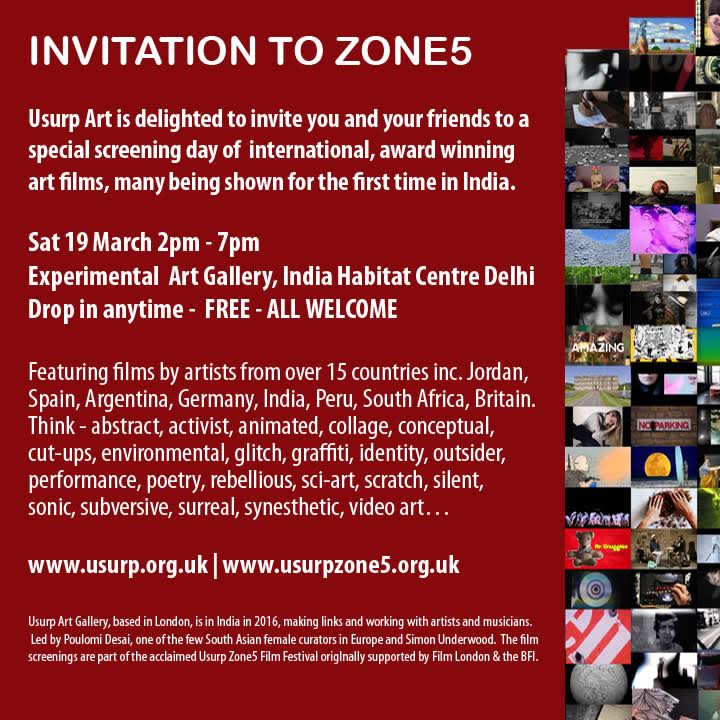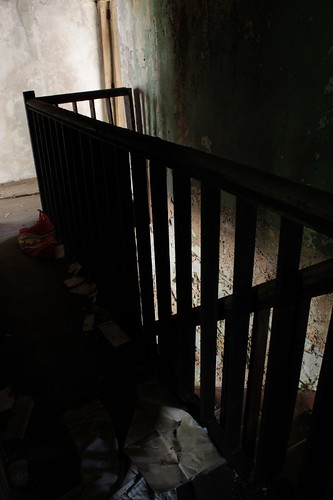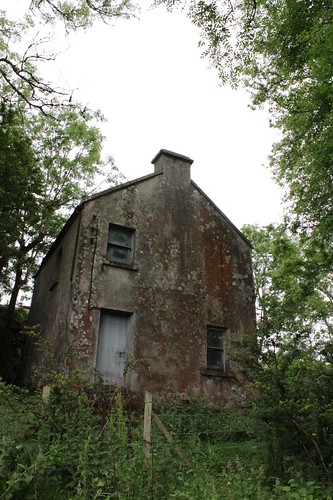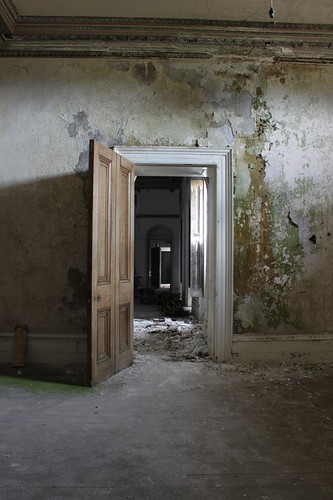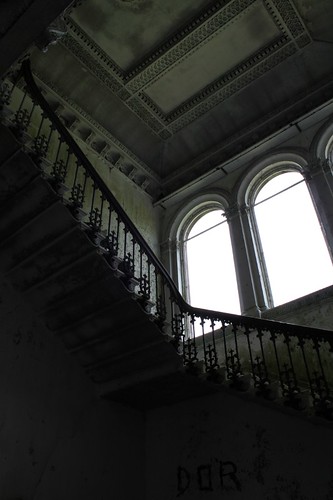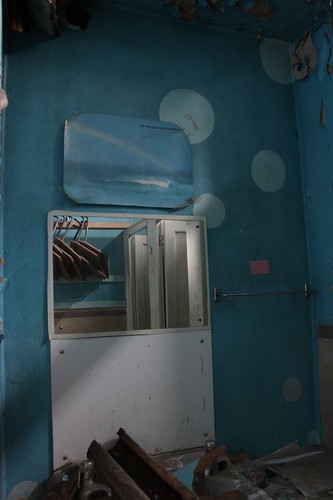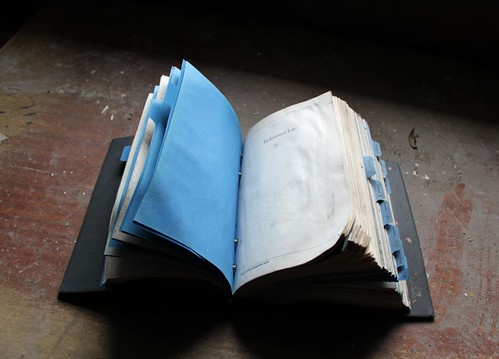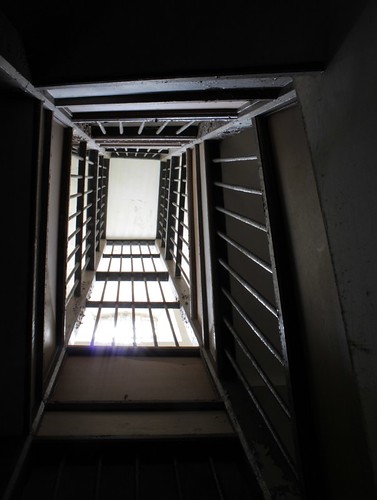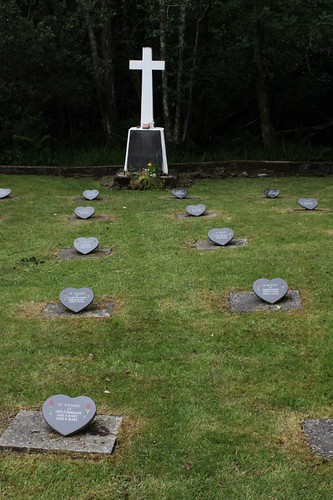Traverse Video Art Writer Simone Dompeyre wrote this article on my videos ‘Ghost House’ and ‘Disciplinary Institutions’ (in French only), for the 2018 catalogue, available online for free.
Mélanie Menard – Ghost House
La mémoire se forme sur les reliefs du temps ; des maisons vides depuis si longtemps que poussière, tavelures, fissure et murs lépreux n’augurent pas de nouveaux aménagements.
Maison simple à étage, avec fenêtres barrées de rideaux plus ou moins intacts, blancs à fleurs ou rouges plus audacieux et dont l’ameublement tout aussi simple ne manquait pas de l’essentiel ni des objets du quotidien désormais parsemant les décombres.
Ce n’est toujours cependant pas la nostalgie qui guide cette investigation, aux mouvements curieux, ne refusant aucun axe ni zooms avant ou arrière car même si en incipit, une petite horloge jouet, décorée, poursuit son balancement en attestation des attentes d’une petite enfant, les bouteilles vides nombreuses, l’imagerie pieuse fréquente entraînent vers un autre constat du mode de vie. Enfant roi abîmé saisi au passage. Christ en jeune homme aux longs cheveux dont le renversement n’est pas redouté par le montage qui le fait tournoyer – jouxte, en un autre plan, des pages arrachées d’un livre de prières qui n’hésite pas à énumérer « éjaculation interdite et « fleurs ». Le visage de la vierge occulte à demi celui d’une jeune femme qui l’occulte à son tour comme prise par la modèle… les reflets de deux miroirs redonnent plus de brillance à ce qui est, en écho de ce qui fut et le vert des plantes éloigne tout larmoiement.
La musique électronique elle–même se teinte de mélancolie, Shadow of sleep
son nom adopte le propos : ils dorment ceux qui furent ainsi pris par de telles règles…d’eux demeure l’ombre grâce à laquelle on peut les réveiller.
Simone Dompeyre
Melanie Menard – Disciplinary Institutions
Melanie Menard pense en photographie et en films. Son regard est porté par des préoccupations d’Humaine. Elle sait et rappelle que nous sommes des êtres de la mémoire et d’Histoire et que nous nous devons d’exercer la première pour l’autre.
Elle entraîne en des déambulations très dirigées, en perspectives calculées, en travelling épousant le plafond pour revenir au sol, en zoom déictique vers les décombres de diverses maisons mais d‘identiques raisons d’être et architectures. Des lieux « disciplinaires » de contention dont une énorme clef découverte dans un entassement de papier est emblématique, dont l’impasse s’avère la seule non-issue des couloirs aux portes fermées alors que les hauts murs et les fréquents barreaux déclenchent le motif de l’angoisse.
Le film va à la trace, il ausculte les murs lépreux, les tapisseries en lambeaux et intègre la découverte-irruption d’un étage plus « noble » à la tapisserie colorée, années 1960, à la rampe d’escalier ouvragée sans doute l’habitat de la direction de ses lieux sans davantage de commentaire.
Le silence n’est, cependant, pas accordé à la visite puisque une musique sourde, répétitive mais qui refuse le facile anxiogène -le film n’est pas d’horreur- n’autorise pas la contemplation esthétisante d’une poésie des ruines.
Mais l’esthétique de la mémoire en acte : couloirs larges avec arcatures en ogive traversés, plus étroits amoncelant les gravats vus de leur entrée, barreaux qui transforment les étages en prison captés en contre plongée, rares dessins appréhendés en légères saccades, carrelages suivis, végétation brillantes colorant l’espace ou graffiti obscènes au-dessus des anciens lavabos, les éléments sont pris en leur lieu et selon ce que leur emplacement offre comme possibilité de prises de vue… ainsi tel passage en caméra portée oscille, tel chariot pour malades est capté dans la profondeur du champ.
Ce faisant, la main actuelle entrant dans le champ par deux fois pour attraper telle page manuscrite, feuilleter tel texte imprimé ou approcher le dossier avec index et pages du Nouveau Testament, atteste de l’engagement de l’artiste dans cette « histoire à contretemps » selon l’éclairante formule de Françoise Proust. Revenir à ces lieux pour donner Histoire à ceux/celles qui y furent détenu/es sous des prétextes de morale et de diktats religieux, plus précisément catholique comme le dénote la statue de la Vierge saint-sulpicienne, intacte dans le jardin.
Le générique énumère les lieux de tels enfermements : « l’asile » qui longtemps a accueilli/enfermé malade et vagabonds ou, en une métonymie les indésirables ; « la blanchisserie, l’école professionnelle et la maison de travail (obligatoire) » où ces détenu/es travaillaient gratuitement.
Le film fait des décombres, leurs traces.
Pour paraphraser Deleuze, réclamant dans L’Image-Temps, à « l’art cinématographique […] non pas s’adresser à un peuple supposé, déjà là, mais contribuer à l’invention d’un peuple. » reconnaître à Mélanie Ménard d’inventer ces innommés, s’impose.
L’artiste dit :
Dans Surveiller et Punir, Michel Foucault définit les « Institutions Disciplinaires » comme des lieux où l’homme est rendu obéissant sous la répression préventive de toute déviation à la norme. Ma vidéo explore des endroits employés pour faire disparaître, discrètement, des personnes indésirables et/ou désemparées, ainsi le couvent de la Madeleine (qui a servi de prison pour femmes), les asiles psychiatriques (où les queers et les hommes dits déviants subissaient un « traitement » forcé) et les ateliers. Dépassant la simple documentation de ces bâtiments, je me suis intéressée à transmettre la manière dont les détenus disparus depuis si longtemps continuent d’imprégner ces lieux longtemps après leur mort, ainsi que l’aura maléfique qui émanant, toujours de ces bâtiments, perdure dans la mémoire collective.
Simone Dompeyre


